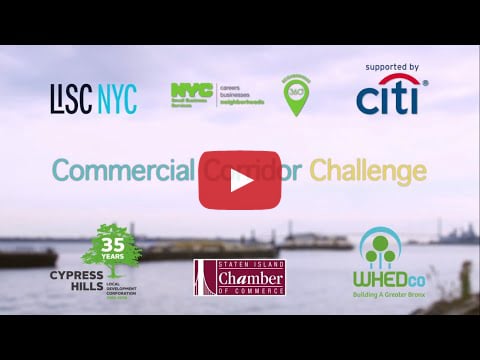No images? Click here
We Need Resilient Commercial Corridors Now More Than Ever
A neighborhood commercial district does a lot of things at once. It generates wealth for small business owners, provides jobs for locals, creates civic spaces to express community culture, and offers goods and services needed by residents, workers and visitors. So it’s easy to see why strengthening commercial districts is a vital part of LISC’s mission to forge resilient and inclusive communities of opportunity across America—great places to live, work, visit, do business, and raise families.
Today, in this midst of the global pandemic caused by the novel coronavirus, commercial districts and their neighborhood-serving small businesses are struggling. Now more than ever, small businesses, particularly those owned by women, minorities and immigrants, need support and resources to help them respond and recover. Building the capacity of community-based organizations is also critical, as they help connect small businesses to resources, build partnerships with anchor institutions, drive corridor level improvement strategies, organize merchants and advocate for policies and capital to help small businesses thrive.
LISC offers resources and tools developed through decades of experience across our network, working with community and public sector partners to build robust small business ecosystems. Building on this foundation,
LISC NYC leads the Commercial Corridor Challenge, an initiative launched in 2016 with Citi and the New York City Department of Small Business Services that serves underinvested urban corridors in seven neighborhoods.
Thanks to support from Citi, we are pleased to share our newly published Commercial Corridor Resource Hub which distills lessons learned from the first and second round of the program and provides a range of practical tools and case studies to inform district revitalization in places across the country.
The Commercial Corridor Resource Hub showcases a new LISC publication written by corridor expert Larisa Ortiz, Preparing a Commercial District Diagnostic, designed for community partners to gather the data needed for strategic community-driven corridor improvements. We know that armed with knowledge, relationships, and robust support systems, small businesses can build resilience before, during, and after a disaster. Our communities are facing unprecedented challenges, and LISC is committed to ensuring an equitable recovery by providing the resources, tools and strategies that community-based organizations and small businesses will need to lead the way.
We invite you to learn more about the tools of the Commercial District Diagnostic by joining a LISC webinar on Wednesday, June 10th from 3-4 pm EST.
Sincerely,

Eva Neubauer Alligood
LISC NYC Deputy Director
We are deeply grateful to Citi for supporting LISC’s commercial corridor resource hub.





